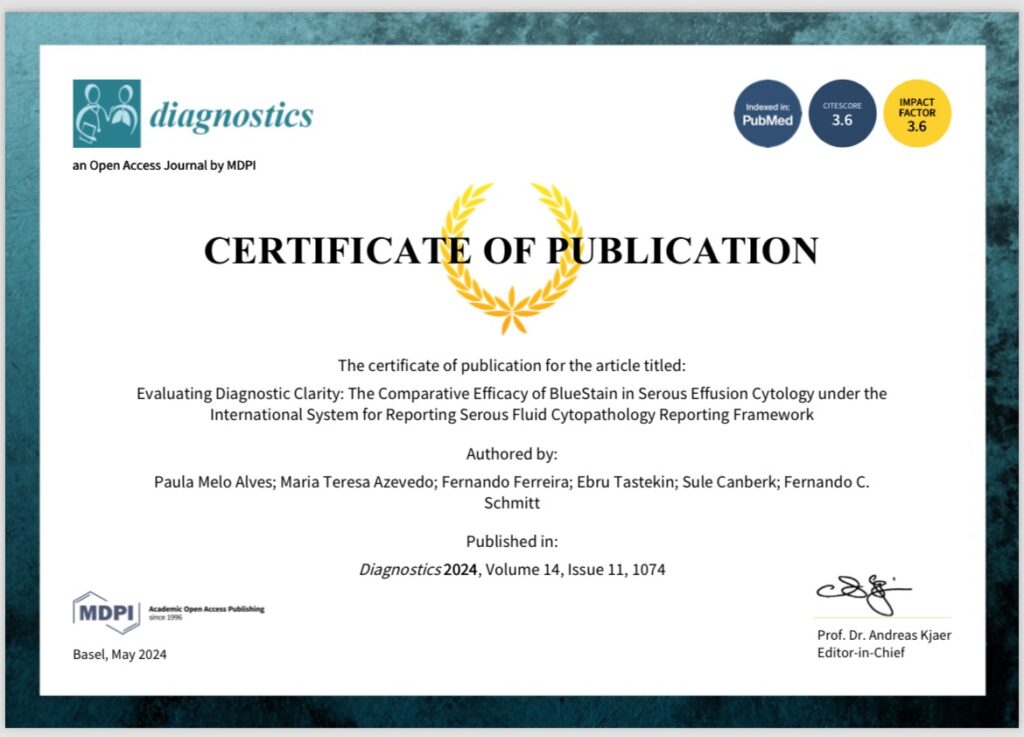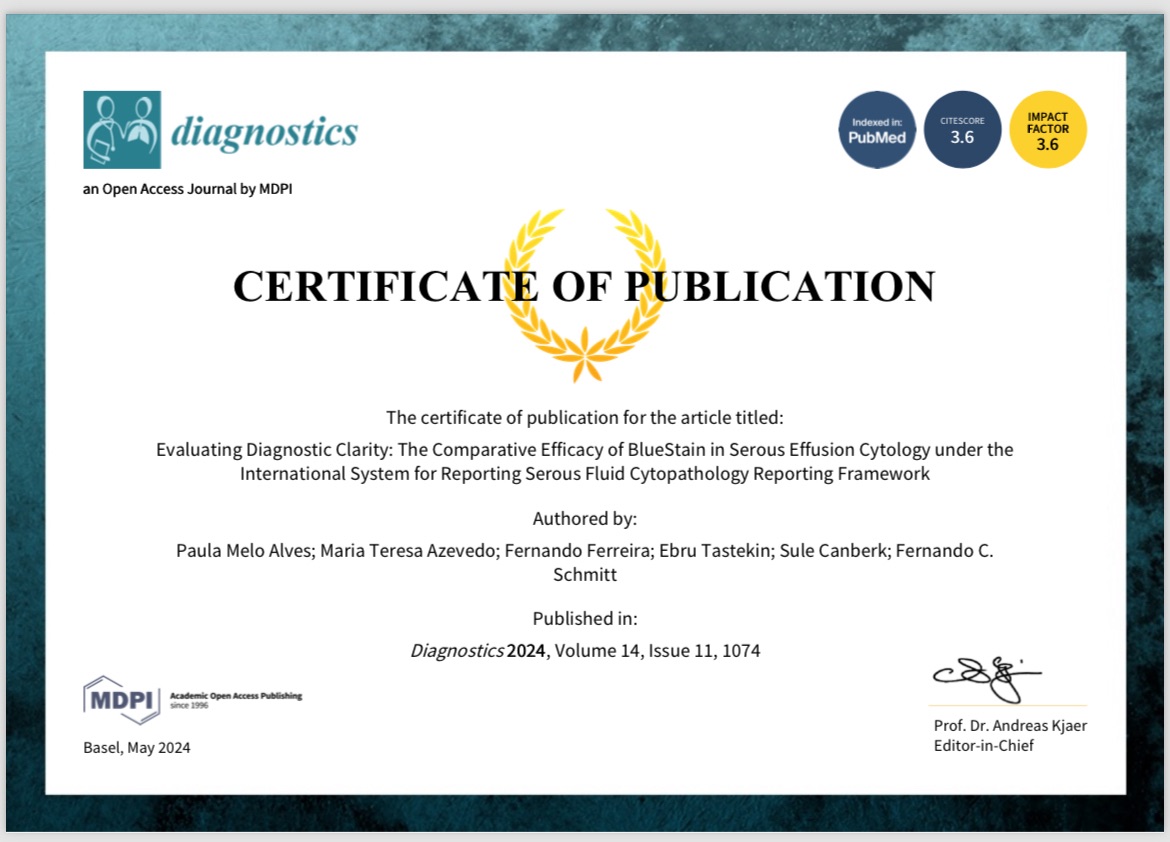
Authors: Paula Melo Alves, Maria Teresa Azevedo, Fernando Ferreira, Ebru Tastekin, Sule Canberk, Fernando C. Schmitt
Published in: Diagnostics, 2024, Volume 14, Issue 11, 1074
A recently published study in the journal Diagnostics delves into the diagnostic efficacy of BlueStain in serous effusion cytology. Authored by Paula Melo Alves and colleagues, the research evaluates how BlueStain performs under the International System for Reporting Serous Fluid Cytopathology (ISRSFC) framework.
Study Highlights:
- Objective: The primary aim of the study was to assess the clarity and diagnostic accuracy of BlueStain, a novel cytological stain, compared to conventional staining methods in the evaluation of serous effusions.
- Methodology: The researchers conducted a comparative analysis involving a series of serous fluid samples. These samples were stained using both BlueStain and traditional staining techniques. The evaluation criteria included diagnostic clarity, cellular detail, and overall efficacy in identifying malignant and benign conditions.
- Findings: BlueStain demonstrated superior performance in several key areas. It provided enhanced cellular detail and improved contrast, which facilitated more accurate diagnoses. The study found that BlueStain’s efficacy in distinguishing between malignant and benign cells was higher than that of traditional stains.
- Implications: The use of BlueStain within the ISRSFC framework could potentially streamline the diagnostic process for pathologists. Improved diagnostic clarity and accuracy may lead to better patient outcomes by enabling more precise and timely treatment decisions.
The study by Alves et al. underscores the importance of continual advancements in cytological staining techniques and their application in clinical diagnostics. By enhancing the tools available for serous effusion analysis, BlueStain represents a significant step forward in cytopathology.
For more detailed insights, the full article can be accessed in Diagnostics, Volume 14, Issue 11, Article 1074.

